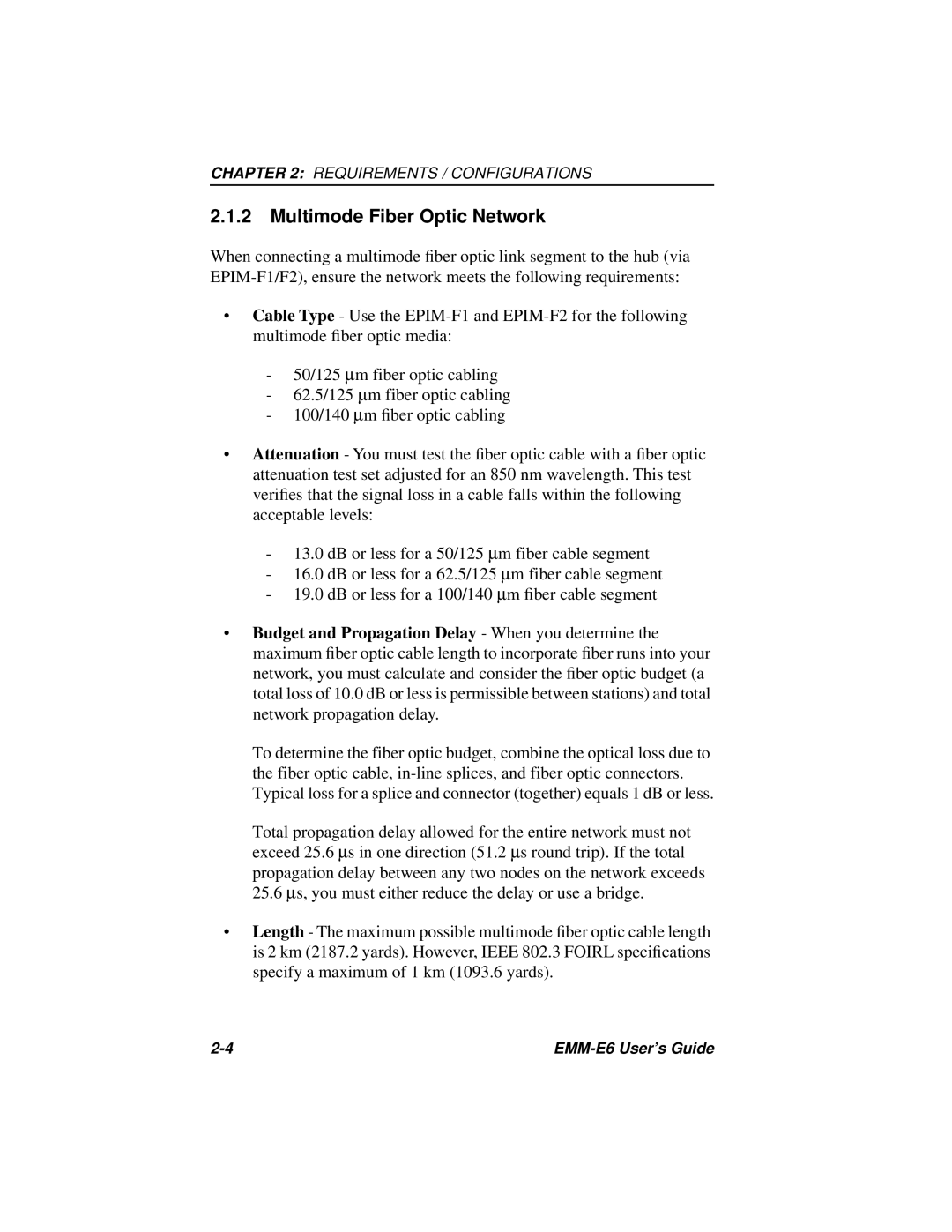CHAPTER 2: REQUIREMENTS / CONFIGURATIONS
2.1.2Multimode Fiber Optic Network
When connecting a multimode fiber optic link segment to the hub (via
•Cable Type - Use the
-50/125 ∝m fiber optic cabling
-62.5/125 ∝m fiber optic cabling
-100/140 ∝m fiber optic cabling
•Attenuation - You must test the fiber optic cable with a fiber optic attenuation test set adjusted for an 850 nm wavelength. This test verifies that the signal loss in a cable falls within the following acceptable levels:
-13.0 dB or less for a 50/125 ∝m fiber cable segment
-16.0 dB or less for a 62.5/125 ∝m fiber cable segment
-19.0 dB or less for a 100/140 ∝m fiber cable segment
•Budget and Propagation Delay - When you determine the maximum fiber optic cable length to incorporate fiber runs into your network, you must calculate and consider the fiber optic budget (a total loss of 10.0 dB or less is permissible between stations) and total network propagation delay.
To determine the fiber optic budget, combine the optical loss due to the fiber optic cable,
Total propagation delay allowed for the entire network must not exceed 25.6 ∝s in one direction (51.2 ∝s round trip). If the total
propagation delay between any two nodes on the network exceeds 25.6 ∝s, you must either reduce the delay or use a bridge.
•Length - The maximum possible multimode fiber optic cable length is 2 km (2187.2 yards). However, IEEE 802.3 FOIRL specifications specify a maximum of 1 km (1093.6 yards).
|
